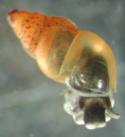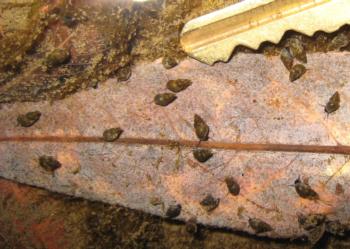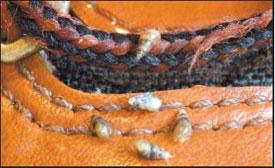New Zealand Mudsnails
The New Zealand mudsnail, Potamopyrgus antipodarum, is an aquatic invasive species that was first found in the United States in Idaho in the 1987, and has since spread throughout the West. They appeared in California in the late 1990’s in the Owens River, and were found in southern California in Malibu Creek in 2005 and in Piru Creek in the Santa Clara River watershed in 2006. Since their discovery in Malibu Creek, they have spread to several streams in the Santa Monica Mountains. From 2017 on, they have spread into the Bay Area and points north.


We believe they compete with native invertebrates for food and habitat though research is currently underway. What is known is that they reach huge densities. Over 750,000 individuals per square meter have been recorded in the Yellowstone River. As they provide little in the way of food value, they may have detrimental effects on fish and wildlife. They have a separate piece of shell, called an operculum, that can seal them tightly inside their shells, giving them wide ranging temperature and salinity tolerances. They can survive for several days out of water under moist conditions, and even pass through a fish's digestive tract alive.
Taken together, their small size, dark coloration, and ability to stick to things makes them excellent at invading new systems. They can hitch a ride on fishing gear, sampling equipment, shoes (hiding in the treads and under the laces), and clothes, as well as on the fur of dogs and horses. We know of no way to get rid of them once they invade a river system, other than drastic dewatering or poisoning. Researchers are investigating options for biological control.

More Information
USGS Map of current New Zealand Mudsnail distribution in the US
UCCE New Zealand Mudnsnail Fact Sheet
CDFW Invasive Species Program
Protect Your Waters: Stop Aquatic Hitchhikers
Education about the problems caused by releasing unwanted pets and plants. http://www.habitattitude.net/
